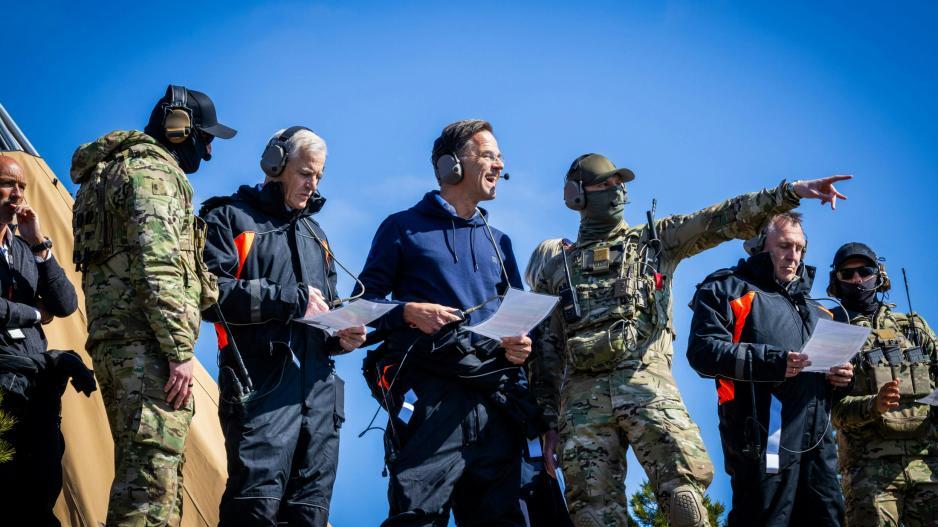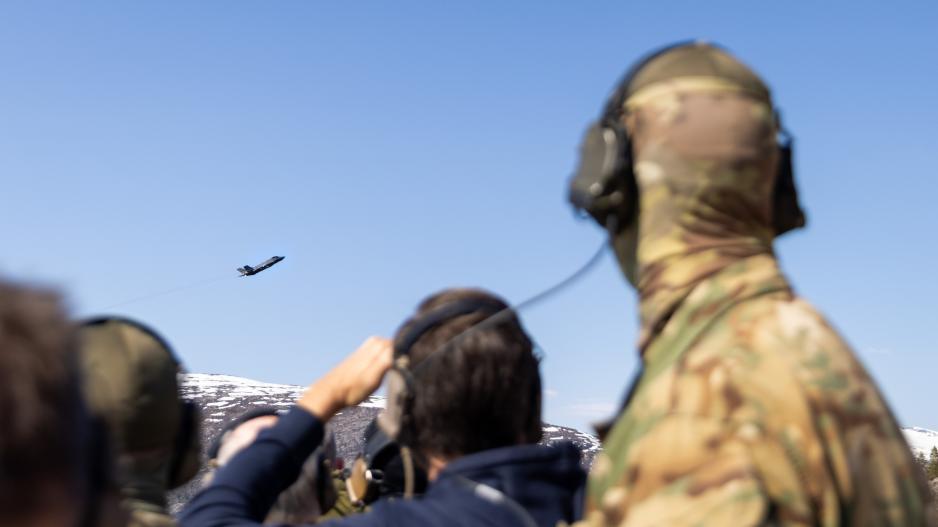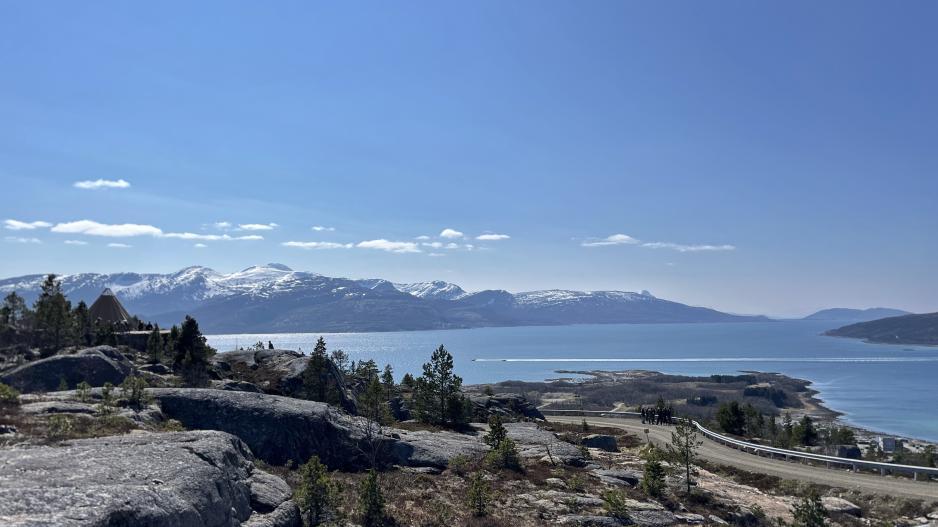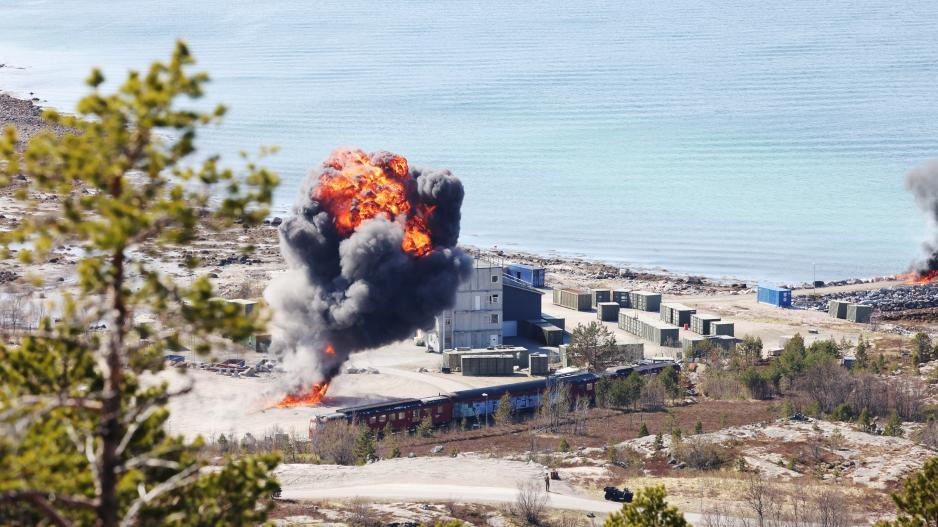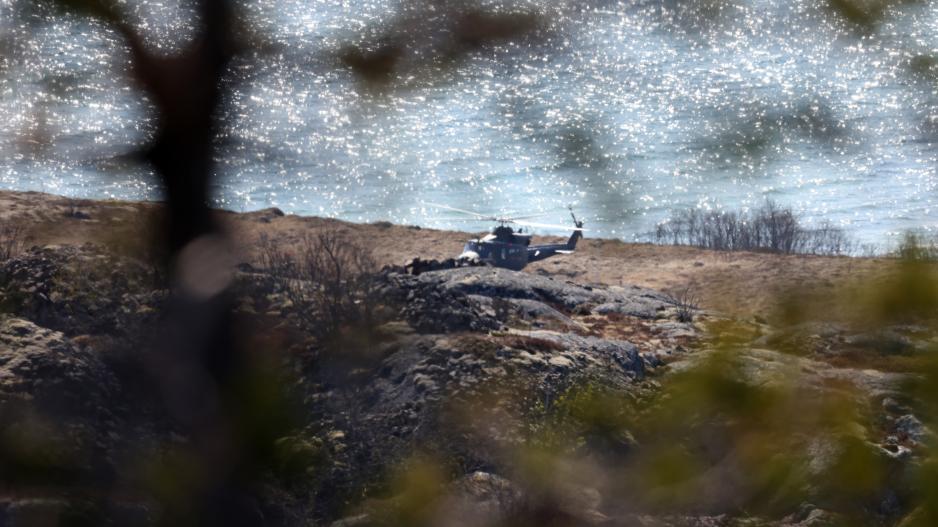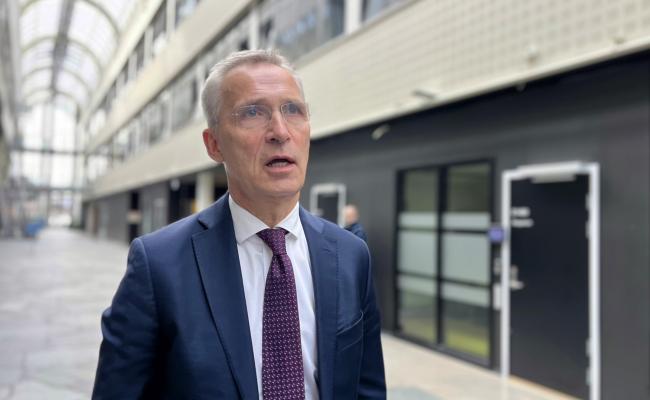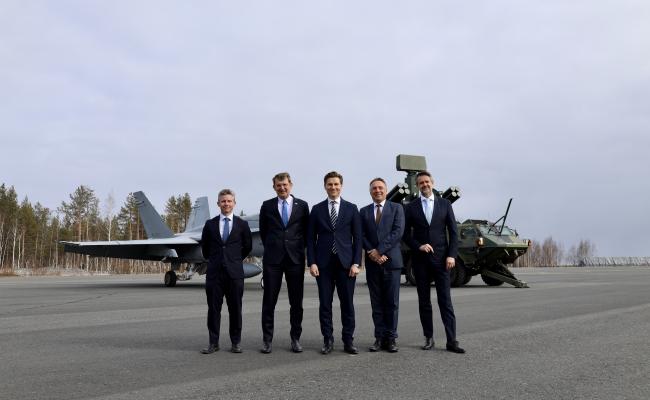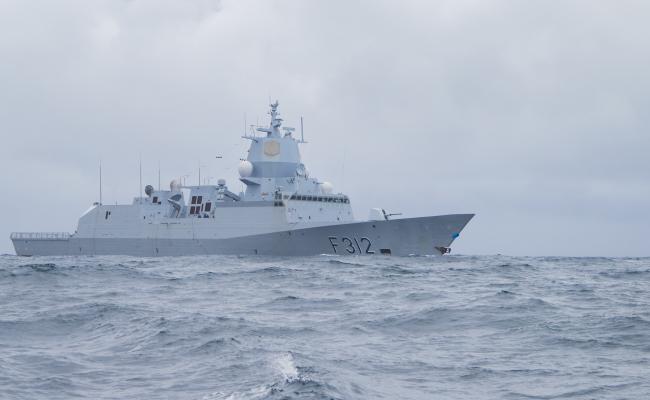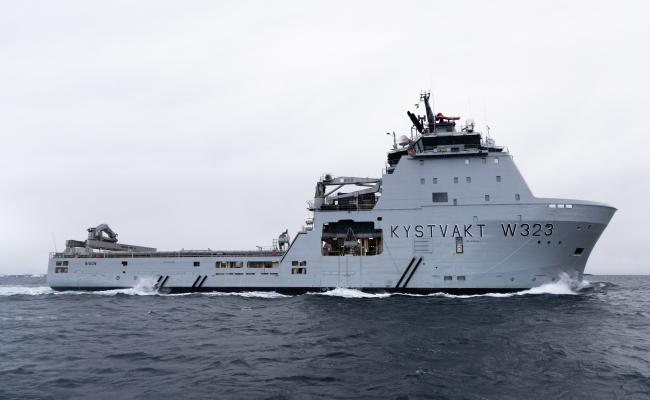NATO Secretary General’s Visit to Norway: Increased Focus on the High North Within the Alliance
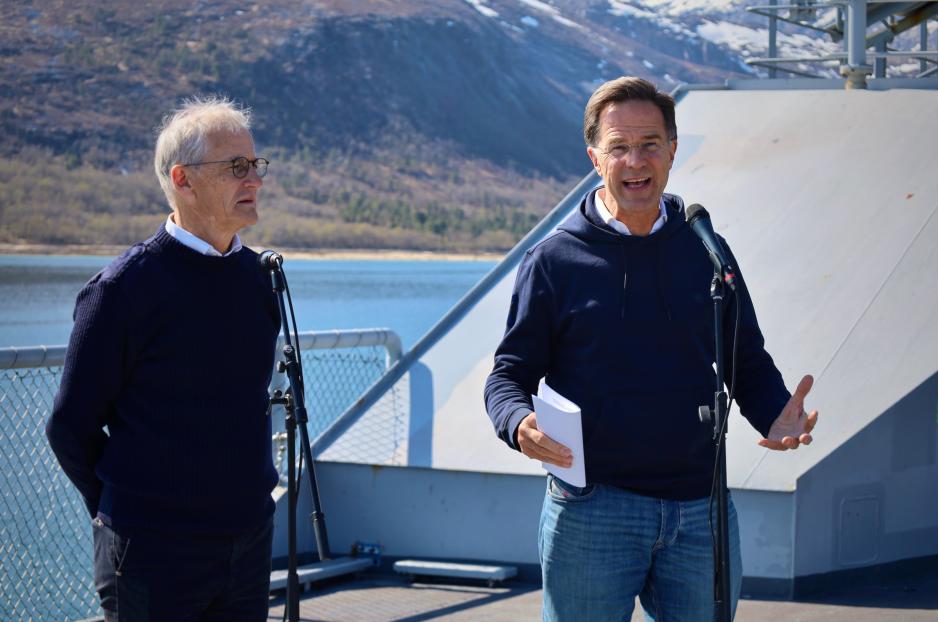
The security situation in the north and the strategic importance of the High North were the central topics during NATO Secretary General Mark Rutte and his team’s visit to Northern Norway, hosted by the Norwegian Prime Minister Jonas Gahr Støre. Here they are on board NoCGV Svalbard at Ramsund naval base. This coast guard vessel has icebreaker capacity and sails a lot in the ocean areas around Svalbard and up toward the North Pole. (Photo: Astri Edvardsen)
Ramsund and Evenes (High North News): NATO’s Secretary General Mark Rutte gained in-depth insight into the security situation in the High North when he visited Northern Norway last week. He also got to see how Norwegian and allied forces work together. A very important visit, says Rutte.
"Being here to discuss the defense of Norway but also focusing very much on the High North is extremely valuable," says NATO Secretary General Mark Rutte.
On Thursday, he visited Ramsund Naval Station and Evenes Air Station in Northern Norway, hosted by the Norwegian Prime Minister Jonas Gahr Støre. Norway's Minister of Foreign Affairs Espen Barth Eide and Minister of Defense Tore O. Sandvik were also present.
"This visit is very important for me because it is about NATO and Norway and about what we collectively are doing to make sure that we keep NATO territory safe. An important element is to gain a better understanding of the situation in the High North and how the seven countries in the north cooperate. These are, of course, Norway, Finland, Sweden, Denmark, Iceland, Canada and the USA," Rutte points out.
Joint allied approach
"We know that new sea lanes are opening up and that the Russians and the Chinese are becoming more and more active here. We know that we have an issue when it comes to, for example, icebreaker capacity," says the Secretary General and continues:
"We are doing more and more together and NATO is also becoming increasingly involved in looking at how we can best coordinate all these efforts."
The seven Arctic countries in NATO recently agreed on a joint approach to the High North and the Arctic and how the alliance is to work on strengthening security in the region, says PM Støre.
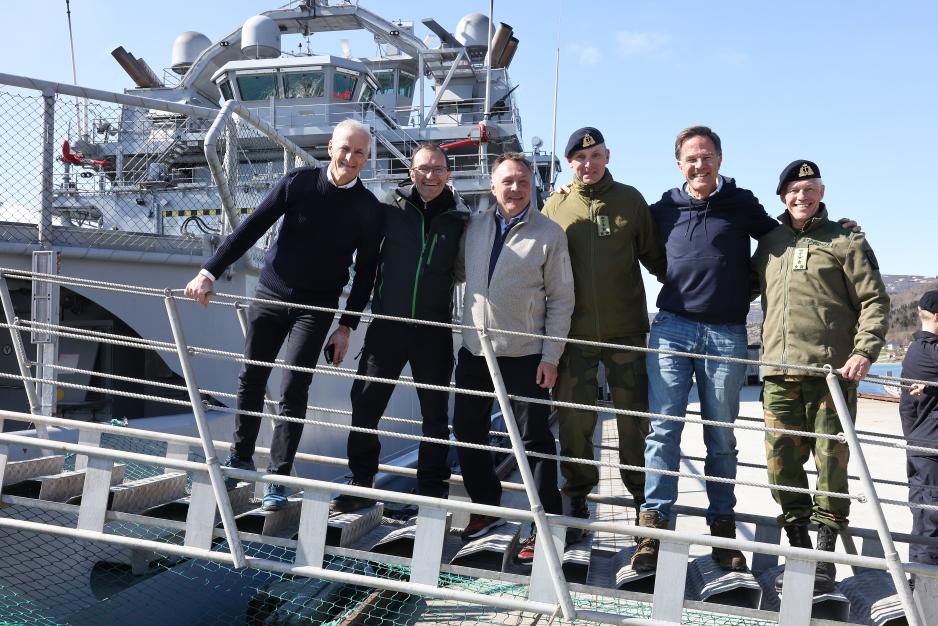
On the gangway of NoCGV Svalbard: Norway's Prime Minister Jonas Gahr Støre, Minister of Foreign Affairs Espen Barth Eide, Minister of Defense Tore O. Sandvik (all from the Labor Party), the Chief of the Norwegian Joint Headquarters, Vice Admiral Rune Andersen, NATO Secretary General Mark Rutte and the Chief of the Norwegian Intelligence Service, Vice Admiral Nils-Andreas Stensønes. (Photo: Torbjørn Kjosvold/ the Norwegian Armed Forces)
A northern standpoint
When asked by High North News about his foremost input from the visit to Northern Norway, Rutte highlights the graded briefings on the High North and Russia from the heads of the Norwegian Joint Headquarters and the Norwegian Intelligence Service.
Gaining insight into the situation in the North, seen from a northern standpoint, such as in Ramsund, also made an impression on the NATO Secretary General.
"Being here, experiencing these surroundings, and talking to people who work with the High North is in itself a reminder of how important this region is. It is also very inspiring to continue working on this," the Secretary General says to HNN.
He also mentions that during the briefings at NoCGV Svalbard, he took a closer look at a map with the North Pole at the center.
"It gives a change of perspective to look at such a map that shows how close all the different parts of the Arctic are interconnected – where seven of the countries are in NATO and one being Russia that cooperates closely with China," Rutte pointed out.
An important overview
"I appreciate that the Secretary General comes to Norway very early in his term to get an overview of what the High North and the Arctic really mean for the Arctic itself but also for NATO’s security at large," PM Støre says.
"The world’s largest nuclear arsenal is located in the North, close to the Norwegian border. Norway has the world’s second-longest coastline and has in-depth knowledge of the strategically important northern sea areas. Norway is NATO’s eyes and ears in the North. I am pleased we were able to provide the Secretary General with a better understanding of Norway’s role during his visit," the prime minister emphasizes.
He also refers to the fact that Norway is to establish NATO’s new combined air operations centre (CAOC) in the High North. This will be permanently located at Reitan outside Bodø in Northern Norway, the PM announced last Tuesday.
Also read (the article continues below)
Showcased capabilities
During the visit, the NATO Secretary General also gained insight into Norwegian defense capabilities and allied interoperability.
At the Ramnes exercise and firing range, Rutte and the ministers participated in an exercise with activities at sea, on land, and in the air. Special forces in high-speed boats conducted an infiltration operation, F-35 fighters simulated hitting targets, and Bell 412 helicopters ensured extraction.
The secretary general and the ministers gave the fighter jet pilots commands from a lavvu with a solid overview of the headland.
PM Støre chose to bring Rutte to Ramsund and Evenes in particular because these bases serve as central hubs for much allied training and exercising, which includes naval, special, air, and land forces. In the summer of 2022, both bases became agreed areas under the US-Norway Supplementary Defense Cooperation Agreement.
The prime minister also brought the secretary general on a helicopter ride over the Ofoten region, specifically toward the port of Narvik, central to the reception and transit of allied forces into Sweden and Finland.
Post landing at the Evenes Air Station, Rutte and the ministers were briefed on maritime surveillance in the High North using P-8 maritime patrol aircraft.
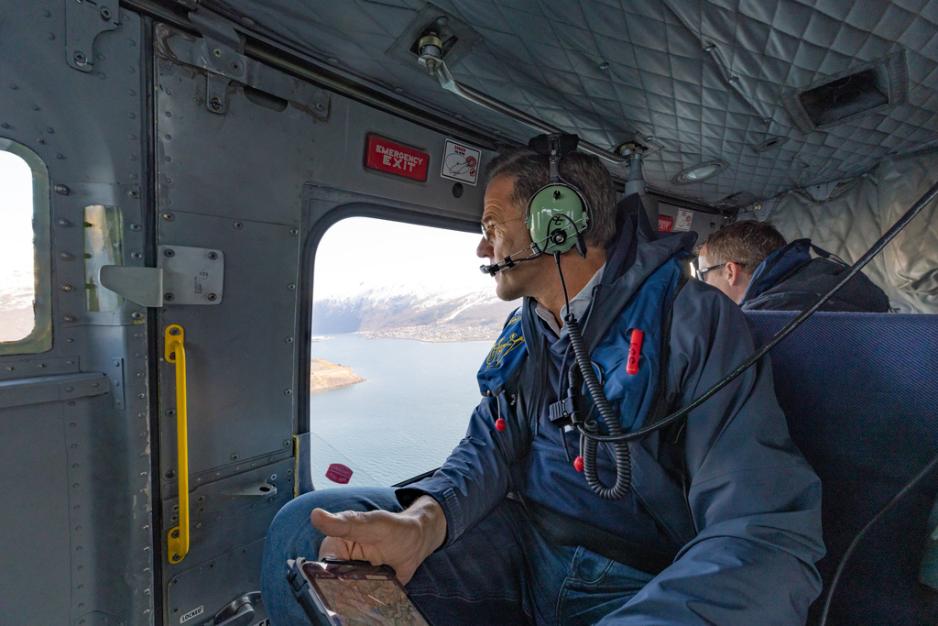
The 339 SOAS helicopter squadron at Bardufoss air station provided NATO Secretary General Mark Rutte with an overview of the Ofot region in a Bell 412 helicopter. (Photo: Onar Digernes Aaase/ the Norwegian Armed Forces)
A new understanding
Later in the day, the Norwegian minister of foreign affairs elaborates on the Arctic countries' new joint approach to the High North and Arctic in NATO.
Norway plays a central part in promoting this work, and Barth Eide outlines the long lines of this process.
Twenty years ago, the Norwegian Stoltenberg II Government attempted to strengthen NATO's focus on the North and invited Arctic allies such as Denmark, Canada, and the US to engage. However, this initiative had mixed success, he says.
"Denmark was more concerned with being with the US in Iraq and Afghanistan, and Canada did not want any particular NATO focus on their Arctic areas. The US Navy and Air Force were attentive to Russia, and our bilateral cooperation with the US was good, but all in all, there were some difficulties in highlighting the High North and the Arctic as NATO topics, Barth Eide describes and continues:
"In recent years, an entirely new understanding of the importance of NATO's focus on the Arctic has emerged. This is related to the return of geopolitics and the fact that Russia has once again become an important entity, leading to a reorientation after many years of strong focus on asymmetric threats, such as terrorists in the Middle East."
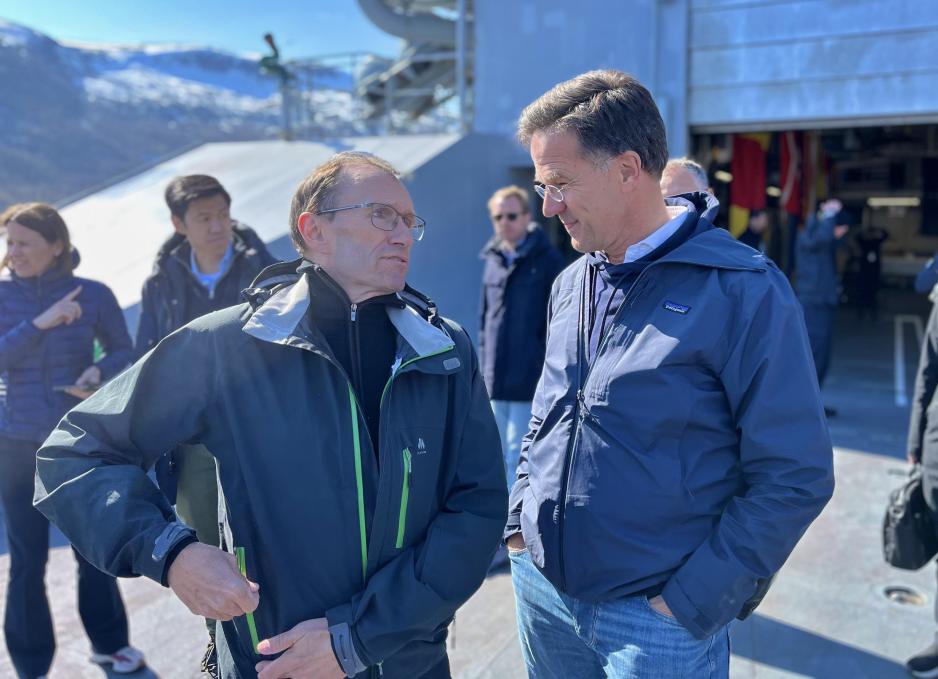
Norway's Minister of Foreign Affairs, Espen Barth Eide, and NATO's Secretary General, Mark Rutte. (Photo: Astri Edvardsen)
Recently, the US President Donald Trump has also made repeated statements about taking control over Greenland, referring to concerns about national and international security, including threats from Russia and China.
"Our response to this is that these are challenges within NATO territory in the Arctic. Therefore, we must work together to face them and find joint solutions. We have talked a lot about this with the secretary general today, and it was also a topic during PM Støre's visit to the White House in April. I am pleased that we are now contributing to move this onto a track that is about more cooperation in NATO on security challenges in the Arctic," Barth Eide maintains.
Ongoing work
What are the key words for the new joint Arctic approach in NATO?
"This is not a public product at this time,, but it includes increased awareness and cooperation around i.a. the issues that we have discussed today: What happens at the Kola Peninsula, what are the patterns in Russian exercising and planning, what will Russia likely do in a crisis situation, and how will NATO face this," replies the foreign minister.
"Central aspects will be sharing information and knowledge, constructing better plans, and strengthening capabilities in NATO's Arctic area, which is the US, Canada, Denmark, with Greenland, Iceland, Norway, Sweden, and Finland," he adds.
Will more information be presented about this at the NATO summit at the end of June?
"It is not certain that it will happen at the summit, as it clearly focuses on unity and a new defense investment pledge. But it is part of the ongoing work in the North Atlantic Council [NATO’s principal political decision-making body, ed. note], and is led by the Arctic states," says Barth Eide.
Increased defense spending
Preparations for the NATO summit and the need for increased defense investments were also a central topic for the discussion between Rutte and the Norwegian ministers on Thursday.
"We have to deliver the capabilities that we, collectively as NATO, need to make sure that we are not only safe today, but also in three, five, and seven years from now, knowing that Russia is actively reconstituting itself. We also know that China is building up its armed forces. In addition, we have the terrorist threat", says the Secretary General.
"This means we must spend much more than the famous 2 percent we committed to in 2014. We have to increase core defense spending, but also defense-related spending. Norway is a leader when it comes to a whole society approach," Rutte points out, referring to discussions on the Norwegian total defense concept.
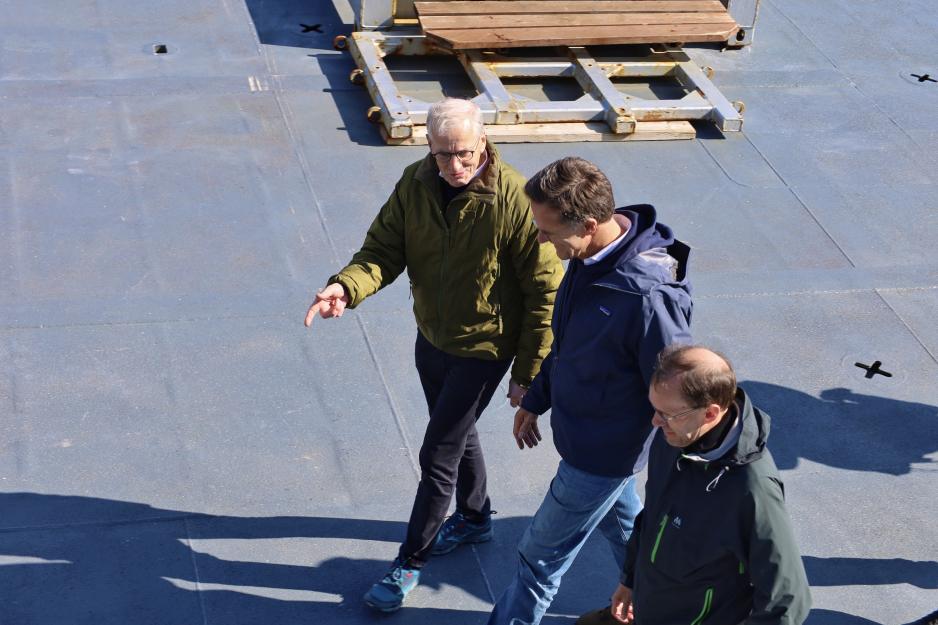
Moving towards higher defense expenditure: Prime Minister Jonas Gahr Støre, Secretary General Mark Rutte, and Minister of Foreign Affairs Espen Barth Eide. (Photo: Astri Edvardsen)
"We are working towards the summit in the Hague, where we are going to commit to increasing our defense spending towards the 2030s. This time, there will be very close coordination between defense spending, capabilities, and defense plans. I believe that the Secretary General will be the key guide to take us there," says PM Støre.



